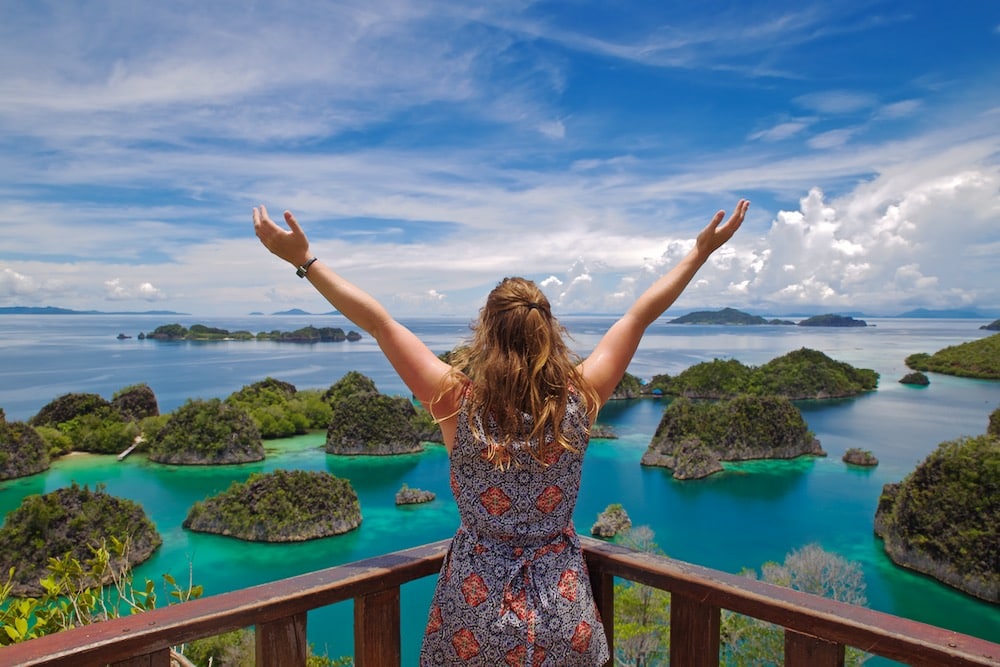Raja Ampat, Indonesia travel tips
Category
Categories
Popular Articles

Welcome to Raja Ampat, located within the Coral Triangle in Indonesia. Known as the crown jewel of Indonesia’s 17,500 islands, Raja Ampat is famous for its unparalleled marine biodiversity and stunning landscapes. With more than 1,500 small islands, cays, and shoals surrounding the four main islands of Misool, Salawati, Batanta, and Waigeo, it is a diver’s paradise. And it’s not just underwater; with rich jungles, unique local tribes, and extraordinary birdlife, Raja Ampat offers plenty to discover.
**Best Time to Visit**
Raja Ampat’s tropical climate means it’s warm year-round, but for the best conditions for diving, snorkeling, and exploring, visit between October and April. During these months, you’ll avoid the windy season and enjoy calmer seas. However, consider mid-January to mid-March for reduced visitor numbers and lower resort rates. The annual Raja Ampat Festival, usually held in October, celebrates local culture and is definitely worth aligning your visit with if possible.
**Climate & What to Pack**
With average temperatures of 27-29°C (80-84°F), Raja Ampat enjoys tropical heat year-round. Be sure to pack light, breathable clothing, a hat, plus sunscreen and insect repellent. Remember to bring your swimwear and snorkel gear (if you have it) as snorkeling is a must-do activity. Don’t forget your rain jacket for occasional tropical showers and good walking shoes for island treks. Lastly, bring a reusable water bottle to stay hydrated while reducing plastic waste.
**Getting There**
The nearest major airport to Raja Ampat is in Sorong (SOQ). From there, visitors usually take a ferry to Waisai on Waigeo Island, which is Raja Ampat’s entry point. There are also private transportation options available. Please note that Indonesia requires most foreign tourists to have a valid visa, so check requirements before your journey. Once in Raja Ampat, visitors are required to purchase a Marine Park entry permit to protect the environment.
**Getting Around Locally**
In Raja Ampat, boats are the main mode of transport. Car or scooter rentals are scarce and unnecessary given the layout of the islands. Small boats, speed boats, and ferries can get you to different islands for varying costs. If you plan on a lot of hopping, considering hiring a private boat. As the islands are very remote, public transport is limited, so it’s advised to organize transport with your accommodation where possible.
**Safety Tips**
Raja Ampat is generally safe, but usual travel cautions apply. Protect your valuables and travel documents from theft and potential loss at sea. Pay keen attention to safety guidelines provided for water activities and be aware of potentially harmful marine life, like jellyfish and stonefish. Respect local customs and traditions – always ask for permission before taking photos of local people or ceremonies. Solo travelers should find the region welcoming, but consider booking tours and excursions from trusted providers to ensure a safe and enriching experience.
**Top Things to Do & See**
No visit is complete without exploring Raja Ampat’s extraordinary marine life through diving or snorkeling. Visit sites like Cape Kri, Blue Magic, or Manta Sandy for an unforgettable experience. Explore the islands by trekking lush jungles, bird watching, or visiting the traditional villages. Dive into history at the ancient rock paintings in Misool island. Finally, a sunrise or sunset viewing from the iconic viewpoint at Pianemo Island is a must.
**Where to Stay**
Accommodation in Raja Ampat ranges from luxury resorts to budget-friendly guesthouses. For luxury, look at Misool Eco-Resort on Misool Island. Mid-range options like Luna Beach Bungalows on Kordiris Island or Raja Ampat Dive Lodge on Mansuar Island offer comfort without the hefty price tag. Alternatively, stay in locally-owned homestays for a budget-friendly and authentic experience.
**Food & Local Cuisine**
Indulge in local cuisine that mainly includes fresh seafood, locally grown vegetables, and tropical fruits. Savor grilled fish or try ‘Papeda’, a staple food of West Papua served with fish soup. Restaurants and cafes are mostly within resorts and guesthouses. Street food options may be limited, but home stays often offer home-cooked meals.
**Cultural & Practical Tips**
The local language is Bahasa Indonesia, but English is also spoken at many resorts. The currency is the Indonesian Rupiah and cash is king on these remote islands, but credit cards are accepted in some places. Don’t expect readily available Wi-Fi, and prepare for unreliable mobile connections. Indonesia uses the Type C and F plugs with a standard voltage of 230 V.
**Sustainable or Responsible Travel Tips**
Raja Ampat is all about conservation. Support local communities by staying in local homestays, buying locally produced goods, and respecting the environment. Don’t touch or stand on corals and take all trash away with you. The Marine Park fee directly contributes to the preservation of this region, so ensure you pay promptly.
**Personal Travel Tip**
If you’re visiting Raja Ampat for the first time, remember it’s more about the journey than the destination. This place is quieter and more remote than most, and that’s part of its beauty. Take time to truly disconnect, soak up your surroundings, explore without rushing, and embrace every moment of your time in this paradise.










